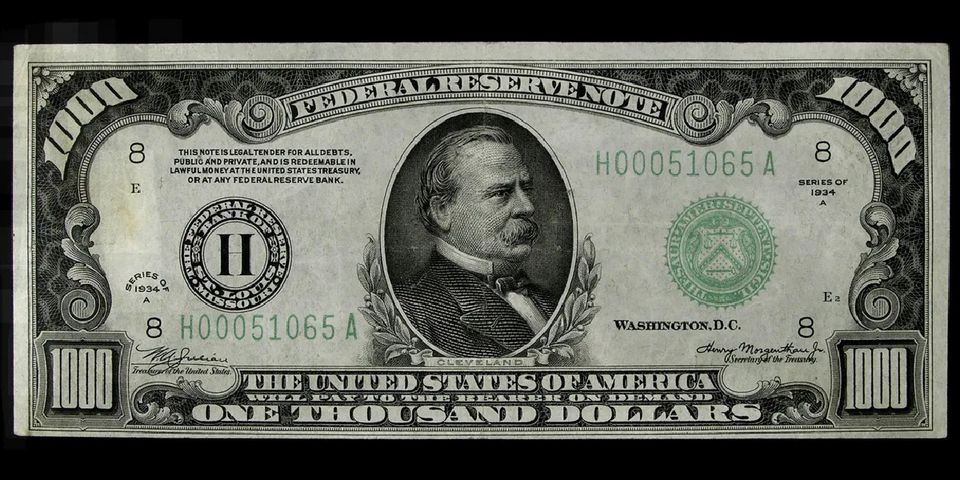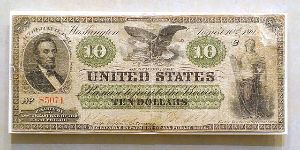
If you are an avid coin collector, you may take interest in expanding your collection to rare paper currency. There are many types of collectible paper notes you can look for, including large size notes, National Bank Notes, misprints, and Confederate currency. The guide below explores what you should know about each.
Large Size Notes
The largest note ever circulated was the $10,000 bill. Large denomination notes, including the $500, $1,000, $5,000, and $10,000 bills, were discontinued by the Federal Reserve and Department of the Treasury on July 14, 1969 due to lack of use. These bills were last printed in 1945.
Before 1929, paper currency was also much larger in size. U.S. currency became 25% smaller than previous notes in order to both reduce production costs and provide the opportunity to redesign and standardize all notes.
National Bank Notes
The National Banking Act of 1863 was passed during the Civil War to authorize nationally chartered banks to issue bank notes. These prominently feature the name of each bank on the face, or front, of the note. This was done in an attempt to create a uniform national currency that would provide stability for a growing nation, and was a significant first step towards a national banking system. National Bank Notes were in circulation until 1935.
Confederate Currency

Like the Union, the Confederacy attempted to form their own standard currency. Issued in 1861, Confederate dollars were their primary means to fund the war. These notes are often referred to as “Greybacks,” named after the color of the Confederate uniform and in contrast to the Union “Greenbacks.”
Excessive printing as losses mounted coupled with no underlying backing led to severe inflation. By the end of the Civil War, the notes lost all value. Today, Confederate dollars are valuable items for coin collectors and dealers.
Paper Currency Errors
Similar to coin errors, misprints can occur on paper currency. The most common misprint to leave the Bureau of Engraving and Printing is the gutter fold error, which occurs when the paper is folded before printing. Other misprints include missing print errors, ink smears, cutting errors, solvent smears, insufficient inking errors, and misaligned prints.
For more information about rare paper currency, reach out to Coins Plus. Staffed by award-winning numismatists and industry experts, they are the premier gold bullion and rare coin dealer of Cincinnati, OH. Whether you want to buy, sell, or get an appraisal for your paper currency, you can trust in their reputation as honest and reliable coin dealers. Visit their website for more information about paper and coin collecting, or call (513) 621-1996 to speak with a professional numismatist.
Image Source: Wikipedia Commons
About the Business
Have a question? Ask the experts!
Send your question

